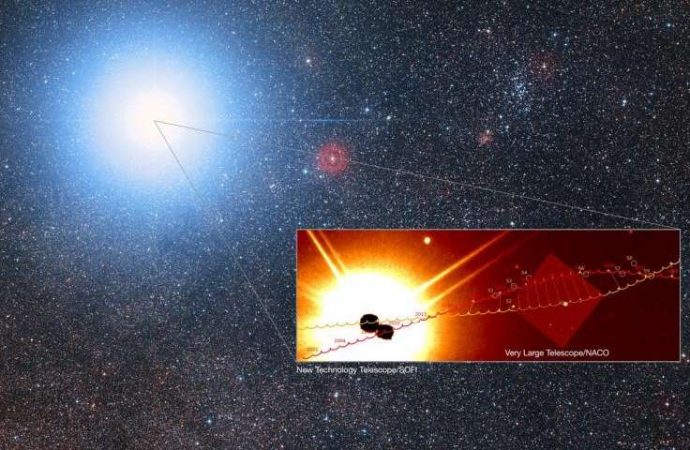A very rare gravitational lensing event, set to occur in 2028, has been predicted by a team of French astronomers led by Pierre Kervella of the CNRS/Universidad de Chile. It will provide an ideal opportunity to look for evidence of a planet around a nearby star.
Using both new and archive data obtained with a range of ESO telescopes, the team has predicted the trajectories of the fast-moving stellar duo known as the Alpha Centauri A and B, with negligible error. That has allowed them to predict every close alignment until 2050 between the Alpha Centauri pair and the stars which lie close to them on the sky—but which are in fact a great deal further away in space.
Whilst it is satisfying to see into the future with such impressive accuracy, that is not the real prize in these results; they provide a unique opportunity for planet hunting in the Alpha Centauri system, by allowing us to search for secondary gravitational lensing events. Gravitational lensing occurs because a massive object, such as a star, warps the very fabric of the space around it. Light—coming from a distant object—that passes close to the star on its way to us follows a curved path through the warped space. The nearer star acts like a lens, bending the light from the distant object. In the most impressive cases, this can generate an Einstein ring, a circle of light around the foreground star. Because the amount of mass in this nearby star determines exactly how the light deflection occurs, deviations from the expected gravitational lensing effect can be used to determine the presence, and the masses, of planets.
One of the most exciting alignments predicted by this study is between the more massive star in the Alpha Centauri pair, named Alpha Centauri A, and a distant background star—probably a red giant—nicknamed S5. In May 2028, there is a strong chance that the light from S5 will create an Einstein ring around Alpha Centauri A, observable with ESO’s telescopes. This would provide a unique opportunity to look for planetary or low-mass objects in our nearest star system. This is particularly exciting in the light of the recent discovery of the planet Proxima b, which orbits the third star in the same star system, known as Proxima Centauri.
Source: Phys.org

































Leave a Comment
You must be logged in to post a comment.